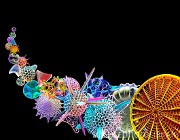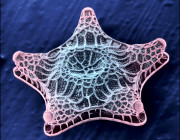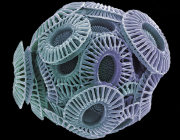Home :: List of Publicly Available Datasets :: Alexandrium minutum CCMP113
Alexandrium minutum CCMP113
Downloads:
| Principle Investigator(s) | Kjetill Sigurd Jakobsen |
|---|---|
| External sample ID | |
| NCGR Sample ID | MMETSP0328 |
| Sample accession number | CAM_SMPL_002532 |
| Assembly accession number | CAM_ASM_000350 |
| Combined Assembly Name | N/A |
| Genus | Alexandrium |
| Species | minutum |
| Strain | CCMP113 |
| Clonal | Yes |
| Axenic | No |
| Prelim. NCBI Taxon ID | 39455 |
| 18S rRNA | |
| Importance of organism and transcriptomes | Alexandrium minutum is an armoured marine autotrophic dinoflagellate species that occurs in coastal areas around the world. It has two modes of reproduction: it may reproduce asexually by binary fission, which may lead to rapid population growth and dense red-tide coastal blooms, or it may reproduce sexually, which results in the formation of resting cysts. Alexandrium minutum produces potent neurotoxic compounds (saxitoxins) that can have serious deleterious effects on other marine organisms and, upon consumption of vector species, may be fatal to humans. |
| Additional citations and references | |
| Environmental Data | |
| Primary citation for organism's characterization, if available | Halim, Y. (1960). Alexandrium minutum, n. gen. n. sp. dinoflagelle provocant des "eaux rouges". Vie et Milieu 11: 102-105. |
| Latitude | 42.23 |
| Longitude | -8.8 |
| Depth (m) | 1 |
| Collection date | 01-SEP-87 |
| Sample collection site | OTHER |
| Other collection site info | Ria da Vigo |
| Sample material (e.g. "seawater," "sediment," etc.) | Seawater |
| Habitat | marine habitat |
| Country | SPAIN |
| Experimental Data | |
| Date of experiment | 20-APR-11 |
| Growth medium | L1 |
| Modifications to growth medium | no modifications |
| Temperature (ºC) | 16 |
| Salinty (psu) | 25 |
| pH | 8 |
| Light (µmol photons / m2 / sec) | 100 |
| Day portion of day:night cycle in hours | 12 |
| Night portion of day:night cycle in hours | 12 |
| Nitrate (μmol/L) | 882 |
| Phosphate (μmol/L) | 36.2 |
| Silicate (μmol/L) | 106 |
| Trace elements (total) (nmol/L) | 24571.2 |
| Investigation type | Eukaryotes |
| Other experimental metadata available | cDNA generated using the dinoflagellate spliced-leader primer DinoSL (Zhang et al. 2007. Spliced leader RNA trans-splicing in dinoflagellates. Proc Natl Acad Sci USA vol. 104 (11) pp. 4618-23) |








